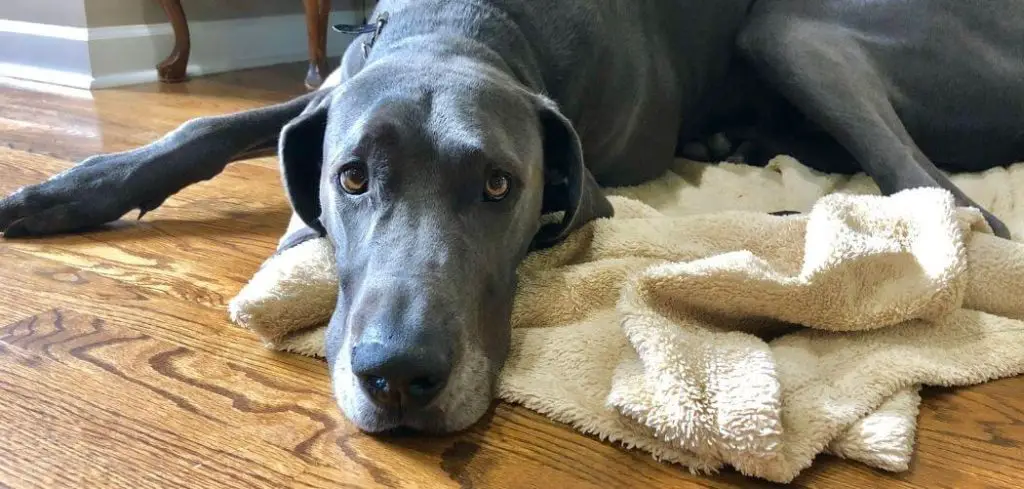When your dog is drinking and peeing normally but refuses to eat, it can be confusing and worrisome. These mixed signals often leave owners unsure whether it’s a serious issue or just a passing phase.
We outline the common causes of a dog drinking and peeing but not eating, what you can do at home, and when to seek veterinary help.
Dog Drinking and Peeing but Not Eating — Why It Happens
A dog who continues to drink and urinate but stops eating may be experiencing an internal issue that affects appetite without impacting thirst. Conditions such as nausea, dental problems, metabolic disorders, infections, or pain can cause dogs to avoid food while continuing to hydrate.
In some cases, certain medications or environmental stressors may also trigger these behaviors. Monitoring your dog’s overall demeanor and other symptoms can help narrow down the cause.

Common Causes of Dog Drinking and Peeing but Not Eating
Gastrointestinal Upset
Dogs with mild stomach upset—due to dietary indiscretion, parasites, or inflammation—might still drink but avoid food. Drinking can offer comfort, while eating may trigger nausea or discomfort.
Other signs may include occasional vomiting, drooling, or sitting hunched.
If the upset is minor, symptoms may resolve in a day, but persistent inappetence can indicate a more serious issue like gastritis or intestinal blockage.
Dental Pain or Oral Disease
Toothaches, abscesses, broken teeth, or severe gum disease can make eating painful while leaving drinking unaffected. Dogs may hover over their food, sniff it, and walk away, while still going to their water bowl.
You may also notice bad breath, drooling, or pawing at the mouth. Dental issues can lead to infections and systemic illness if not treated.
Chronic Kidney Disease
Kidney problems often lead to increased thirst and urination (known as polyuria and polydipsia), paired with a drop in appetite.
Toxins that build up in the bloodstream due to kidney dysfunction can cause nausea and reduced hunger.
Other symptoms might include weight loss, bad breath (often ammonia-like), and pale gums. Early detection is key to slowing progression.
Read more: Dog Not Eating and Drinking a Lot of Water (Is it serious or just dehydration?)
Diabetes Mellitus
Diabetic dogs typically drink and urinate more than usual. As the disease progresses, especially if unmanaged, appetite can drop.
This often occurs when glucose levels are unstable or when a complication like diabetic ketoacidosis (DKA) develops.
Watch for weight loss despite normal or increased water intake, lethargy, or sweet-smelling breath.
Diabetes requires prompt diagnosis and long-term management.
Liver Disease
Liver dysfunction can cause loss of appetite while dogs may still drink normally. This is due to toxin buildup affecting the brain and digestive system. Increased drinking may result from electrolyte imbalances or nausea.
Yellowing of the eyes or gums, vomiting, or disorientation may also appear. Liver disease can be gradual or sudden and requires diagnostic testing.
Medication Side Effects
Some medications—especially antibiotics, anti-inflammatories, or chemotherapy drugs—can suppress appetite while sparing thirst.
If your dog recently began a new treatment, this could explain their behavior.
Temporary changes in appetite may resolve on their own, but long-term refusal to eat needs to be discussed with your vet.
What to Do If Your Dog Is Drinking and Peeing but Not Eating
Try offering bland, easy-to-digest foods like boiled chicken and rice in small portions. Warming the food or adding low-sodium broth may encourage eating.
Ensure your dog isn’t experiencing dental pain—gently inspect the mouth if they allow.
Keep their environment calm and stress-free, especially if recent changes (like moving or a new pet) have occurred.
Avoid offering multiple new treats or foods, which can upset the stomach further. Stick to small, simple meals and observe behavior carefully.
Keep your dog hydrated, but avoid excessive water intake all at once. Sometimes ice cubes or ice chips are more tolerable if they’re nauseous.
When to Call or Visit Your Vet
If your dog has not eaten for more than 24–36 hours, especially with continued weight loss or weakness, call your vet.
Watch for red flags like vomiting, diarrhea, yellowing eyes, pale gums, bloated abdomen, or signs of dehydration (sticky gums, skin tenting).
Also seek help if your dog has a history of diabetes, kidney disease, or liver problems, and begins refusing food. These cases can become emergencies quickly.
Behavioral changes—such as hiding, whining, or excessive panting—may also signal pain or internal distress that requires medical attention.
Read more: My Dog Is Peeing and Pooping but Not Eating (Why it happens)
Key Takeaway
If your dog is drinking and peeing but not eating, something more than just pickiness may be going on.
From dental issues to organ dysfunction, several medical conditions can affect appetite without stopping hydration.
Stay observant and don’t delay a vet visit if symptoms last more than a day or two. The sooner you identify the cause, the better chance your dog has at a smooth and healthy recovery.
